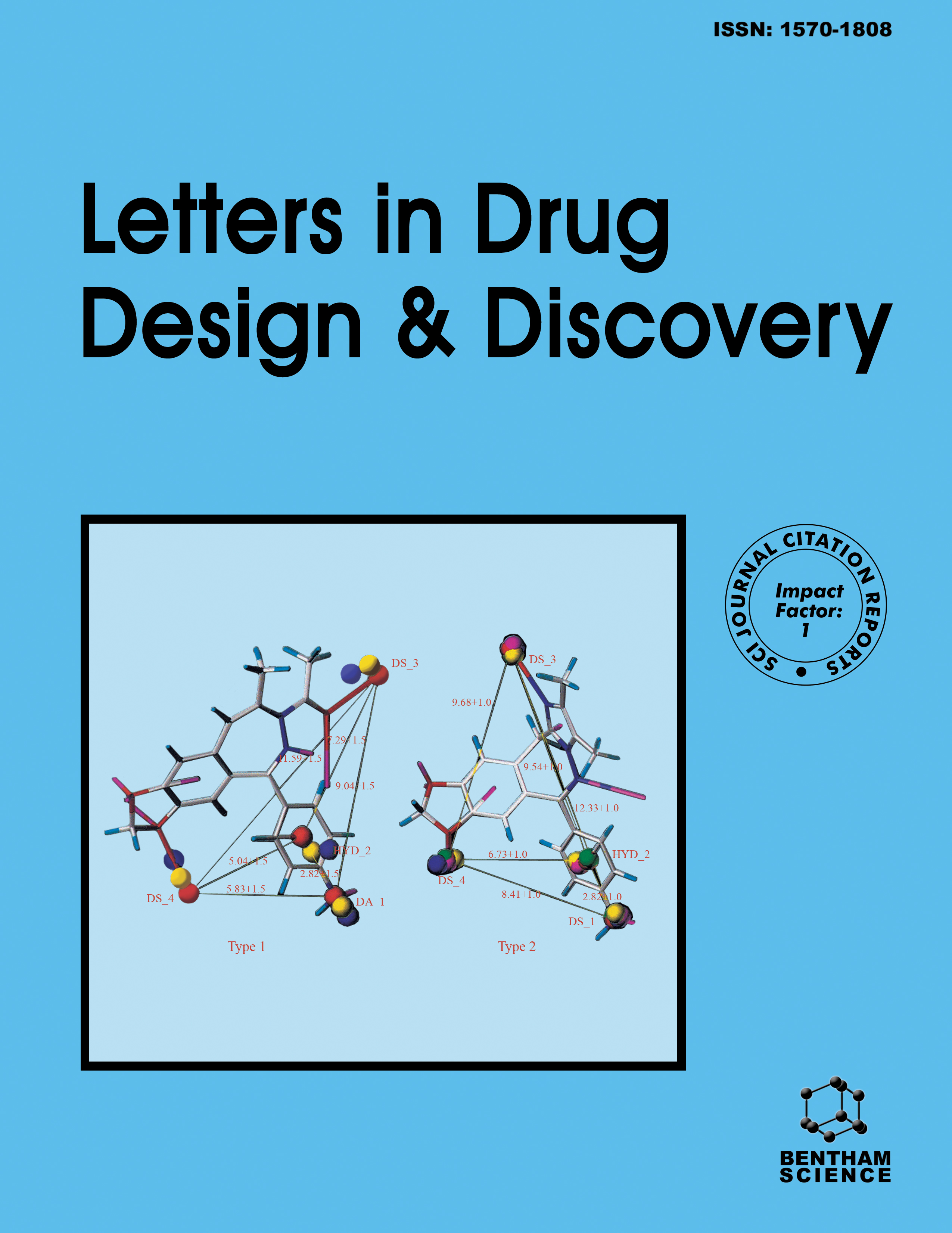-
s New Hydrazone Derivatives of Pyrazole-4-carboxaldehydes Exhibited Anti-inflammatory Properties
- Source: Letters in Drug Design & Discovery, Volume 17, Issue 4, Apr 2020, p. 502 - 511
-
- 01 Apr 2020
Abstract
Background: Several series of hydrazone derivatives of pyrazole-4-carboxaldehydes (4- 11) were designed and synthesized to screen their inflammatory activity. Methods: The products were characterized by 1H NMR, 13C NMR and HRMS. In vitro LPS-induced TNF-α model and in vivo xylene-induced ear-edema model were used to evaluate their antiinflammatory activity. Results and Conclusion: Bioassays indicated that most of the compounds markedly inhibited the expression of TNF-α at the concentration of 10 μg/mL. Compounds 7b and 11c, two of the most potent compounds, exhibited TNF-α inhibitory ability in a dose-dependent manner with IC50 values of 5.56 and 3.69 μM, respectively. In vivo, intraperitoneal administration with 7b and 11c markedly inhibited the ear edema at the doses of 20 and 50 mg/kg. Compound 11c, inhibited edema by 49.59 % at the dose of 20 mg/kg, was comparable to the reference drug dexamethasone at the same dose (with an inhibition of 50.49 %). To understand the binding pattern, molecular docking of representative 7b and 11c was performed, which demonstrated that both compounds have a forceful binding with the TNF-α, and that the phenyl and hydrazide moieties of them play a significant role in binding with the target site.


